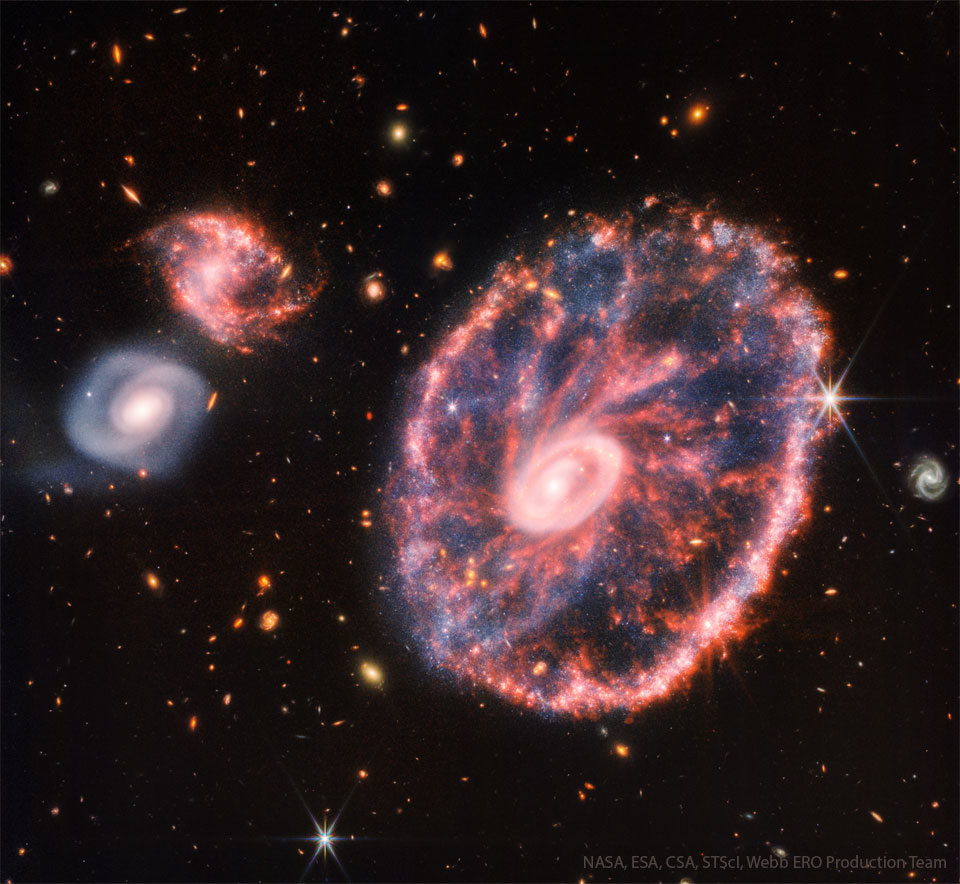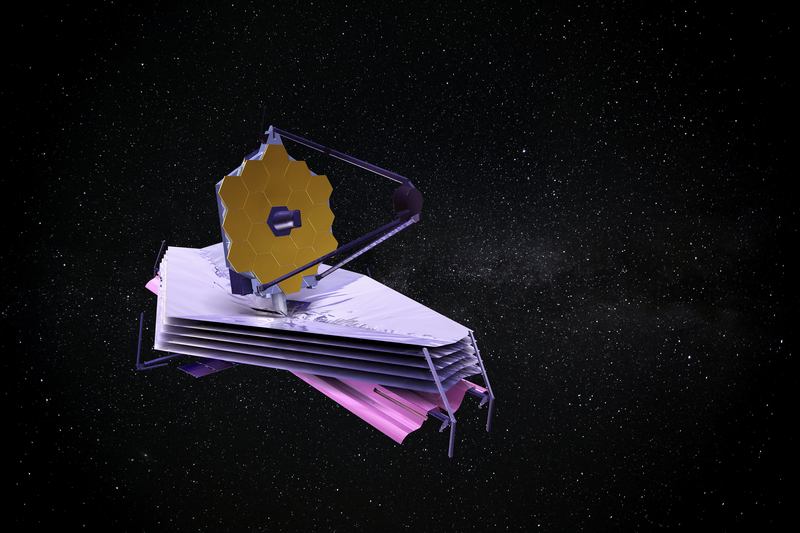The James Webb Space Telescope is a significant advance in our ability to discern details about the universe that even the Hubble Telescope was unable to render. The Webb, which is a collaboration between NASA, the European Space Agency, and the Canadian Space Agency, records light in the infrared part of the spectrum, so it detects heat signatures rather than visible light. Launched in December 2021, it reached the L2 Lagrange point* between the Earth and the Sun in January 2022. NASA released the first amazingly clear images from the Webb in April.

This is the Webb’s image of the Cartwheel Galaxy, named because it resembles a wheel and its spokes. This unusual and colorful galaxy is part of a small cluster of galaxies. Its companions, seen to the left, have the more common spiral shapes. Although scientists do not know precisely how the Cartwheel developed its distinctive wheel-like appearance, it is likely the result of a smaller galaxy colliding with a larger one. The force of the impact seems to have caused interstellar gas to expand from the larger galaxy’s core. The expansion compressed gas in the large outer ring, and that compressed gas formed clumps whose gravity ignited new stars. The glowing outer ring we see in this image is a vast star-producing region.
The central region of the Cartwheel Galaxy looks like a pink flying saucer. In it lies the galaxy’s large central black hole surrounded by a vast glowing swirl of gas and stars. Although that pink central region appears small, it is tens of thousands of light years across. The entire Cartwheel Galaxy is more than 144,000 light years in diameter, which makes it about half again larger than our Milky Way. It is estimated to contain between 2.9-4.8 x 109 solar masses, which means that if its average star were the size of our Sun, it would contain around four billion stars and perhaps sixteen to twenty billion exoplanets, some of which would no doubt be rock-and-water planets like Earth.

Could there be intelligent life in the Cartwheel Galaxy? Possibly. Probably. But we will never meet such potential beings because the Cartwheel Galaxy is 500 million light years from us. Since light travels around six trillion miles a year, that means the Cartwheel is thirty quadrillion miles from Earth. Such vast distances are impossible to imagine.
But a light year is not only a measure of distance; it is a measure of time. What we are seeing when we view this image of the Cartwheel Galaxy is how it appeared 500 million years ago during the Cambrian Period when the first animals emerged from Earth’s oceans. Even at the incredible speed of light, it took that long for light from the Cartwheel Galaxy to reach us. By now, it will no longer have retained its cartwheel shape. Scientists believe it will eventually return to the classic spiral pattern of most galaxies. However, that process of reshaping may take billions more years.
Meanwhile, we can enjoy this blast from the past, this collision of titans that produced an explosive ring 144,000 light years across.
The universe is so vast and we are so small.
*According to NASA, Lagrange points are “positions in space where objects sent there tend to stay put. At Lagrange points, the gravitational pull of two large masses [like the Earth and the Sun] precisely equals the centripetal force required for a small object to move with them. These points in space can be used by spacecraft to reduce fuel consumption needed to remain in position.”
Image credits: James Webb Space Telescope: 235267094 © Grejak | Dreamstime.com; the Cartwheel Galaxy: https://apod.nasa.gov/apod/ap220824.htmlens